The Good
- Looks expensive
- Comfortable
- Compliant ride
The Bad
- Top-spec Ingenium petrol is lacklustre
- Quality lacking in some areas
The Jaguar E-Pace SUV is designed for those who find the F-Pace too big. Ben Griffin headed to Corsica to see what the range-topping P300 petrol and D240 diesel offerings are capable of as part of his review.
It is more than likely you have absolutely no idea what the E-Pace is and there is a valid reason why. In Jaguar land (and nowhere else), ‘E’ is short for something other than ‘electric’. ‘Engine’? Enigmatic? Is it a reference to the E-Type? No one is sure. But it is, in fact, the I-Pace that is powered by electric motors.
What we do know is that the E-Pace is a mid-sized SUV that takes up less room than the F-Pace and is designed to capitalise on a corner of the market that continues to conquer all else.
Still with us? Good. Now it’s time to see whether you would buy one over an Audi Q3, Mercedes-Benz GLA, GLC, BMW X1, X3, Volvo XC60 and the million other mid-sized SUVs available.
Jaguar E-Pace: What’s it all about?
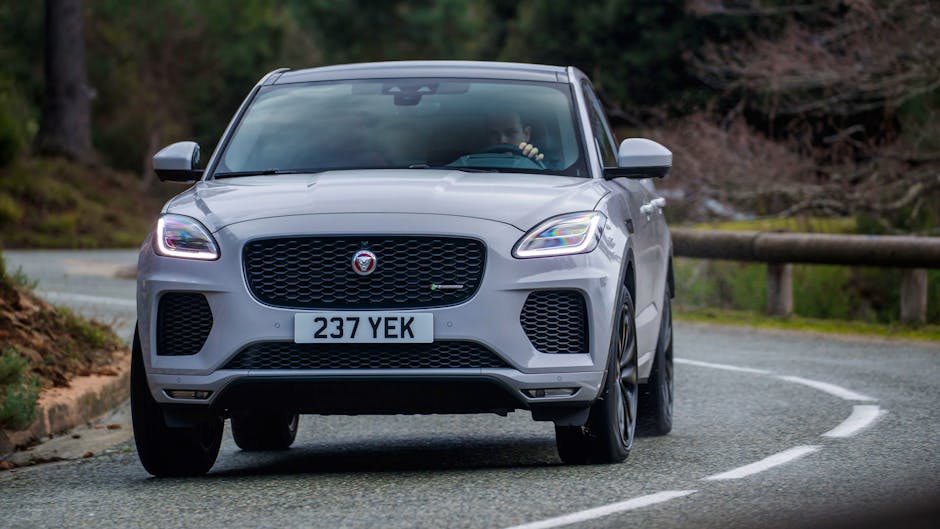
The Jaguar E-Pace is smaller than the F-Pace ─ 4,395mm long, 1,649mm tall and 2,088mm wide with the mirrors out ─ yet it weighs at least as much. Potentially more, in fact, if you go for the beefy, top of the range P300 petrol four-cylinder Ingenium used in the entry-level F-Type.
There are a few reasons why this is the case, including the fact the E-Pace uses the same platform as the Land Rover Discovery and Range Rover Evoque. But it is mainly because a combination of the steel monocoque and vehicle proportions were never going to be weight-friendly.
Another oddity is that the Jaguar E-Pace’s monocoque is more suited to front-wheel drive. Yet only the entry-level D150 diesel can be had in this flavour (the first Jaguar since the X-Type). All other models use all-wheel drive, with up to 100 per cent of power deliverable to either rear wheel or both.
The E-Pace also has torque-vectoring of the braking variety to keep your line in a corner and reduce understeer, while the all-wheel drive system can decouple from the rear to improve efficiency.
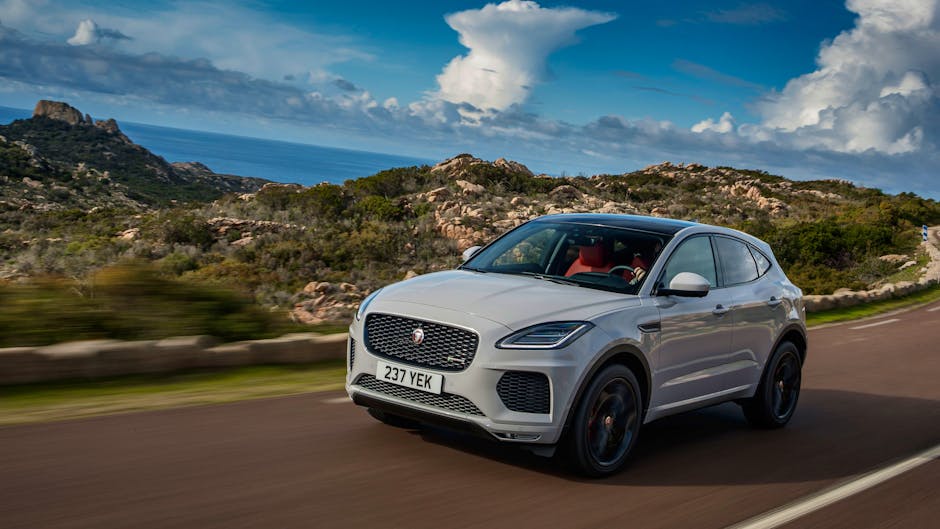
Suspension duties, meanwhile, come in the form of IntegralLink at the back and McPherspon struts at the front, with the latter partially mounted to the chassis to improve steering precision over the Evoque.
Changing gear is done by a latest-generation ZF nine-speed automatic, but you can get a six-speed manual on the lower diesel engines if you want to do things yourself and want to benefit from lower CO2 emissions and improved fuel economy.
There are five engines comprised three diesels (D150, D180 and D240) and two petrols (P250 and P300) to choose between, as well as three spec levels (S, SE and HSE) and the R-Dynamic pack, which gives the E-Pace a sportier look on both the inside and outside.
The Jaguar E-Pace is available now, with prices starting from £28,500 for the 2.0-litre diesel and front-wheel drive. Expect to pay £48,410 for the sportiest offering before any extras.
Jaguar E-Pace: What about interior quality?
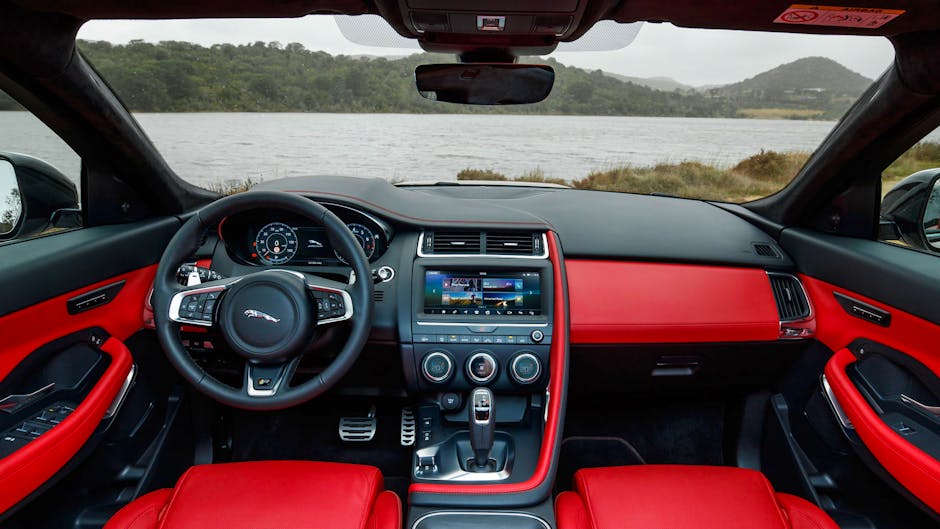
Compared with the F-Pace, the E-Pace offers a more F-Type-esque design. It has a grab bar to separate the driver from the passenger albeit it is much smaller, which helps cocoon the driver, and the overall styling is easier on the eye.
There are, however, some iffy plastics that ensure the E-Pace sits in the middle of the pack for quality, with Volvo’s XC60 considerably better. Still, the Jaguar manages to feel somewhat luxurious and its commanding seating position and generous head room make it practical and comfortable.
Jaguar’s TouchPro infotainment system has improved, yet it still lags behind most of its rivals. This is mainly because of a lack of Apple CarPlay and Android Auto support, but also because it is more difficult to fathom than what you get in an Audi, BMW or Mercedes. At least the standard 1,280×542-pixel display is large enough for most people to see.
One worthwhile option is the 12.3-inch TFT instrument panel that sits behind the steering wheel, which delivers your current speed, fuel level, navigation directions and other useful information in a clear and concise manner.
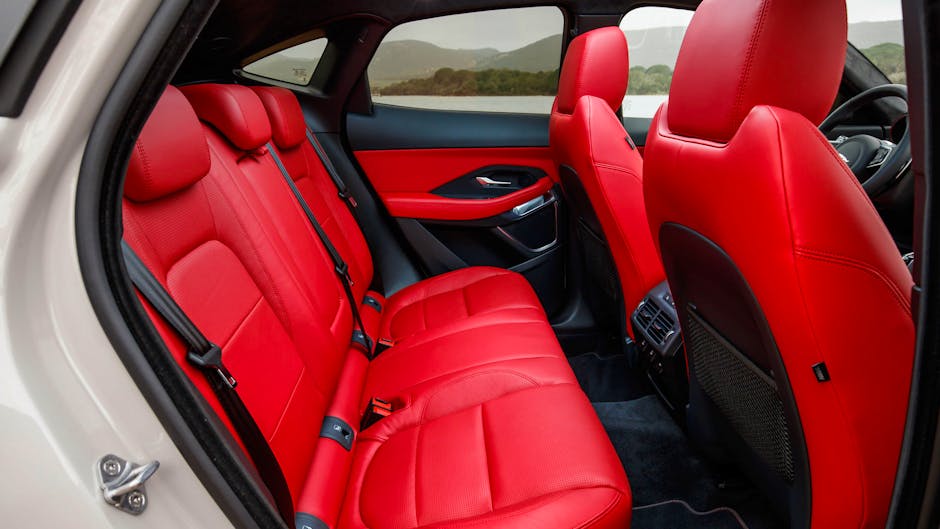
We also found the optional head-up display, which is new for the E-Pace, rather useful. Like rival offerings, you can keep your eyes ahead when checking navigation directions and your speed, which is safer than glancing down or over at the infotainment display.
One USB connection is offered for all passengers as standard. Spend extra on the ConnectPro option, meanwhile, and the E-Pace can benefit from a 4G WiFi hotspot, which up to eight devices can make use of simultaneously.
It is worth noting the E-Pace will be built by Magna in Austria, because capacity has been reached by its UK plants. Whether this will have a bearing on quality is unknown, but we noticed some inconsistencies in the gaps between external panels, which you never see on its Germanic rivals.
Jaguar E-Pace: How does it handle?
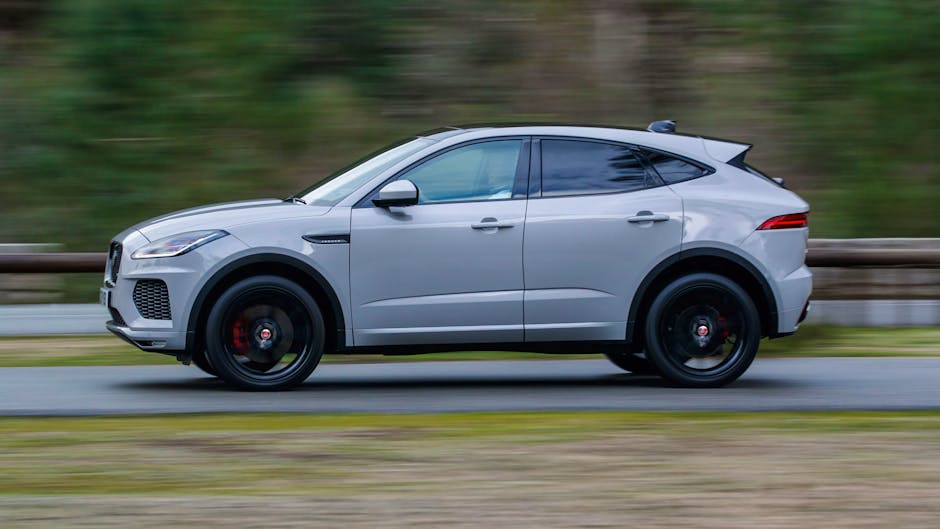
Despite Jaguar’s best efforts to make you believe the Active Driveline all-wheel drive system (debuting in the E-Pace) mimics its rear-wheel drive counterparts, it rarely feels that way. Understeer is the default if you push hard.
This is no bad thing from an SUV perspective because the E-Pace is well-balanced, predictable and never short of grip when pulling away or trying to creep up a slippery slope. But those who want to experience the involvement of, say, the XE or F-Type will be disappointed.
That is not to say the E-Pace is the most boring SUV to drive (most are pretty drab to be honest if you compare with an estate). On a fun road there is potential for satisfaction, with the steering providing decent levels of feedback from the front wheels to aid confidence at speed.
It’s more to do with the P300 four-cylinder petrol, which lacks the same adjustments to improve the noise as you see on the F-Type. Sure, the 0-62mph time of 6.4 seconds indicates grunt, as does the 295lb/ft of torque from 1,500 to 4,500rpm, but it feels very flat and unexciting.
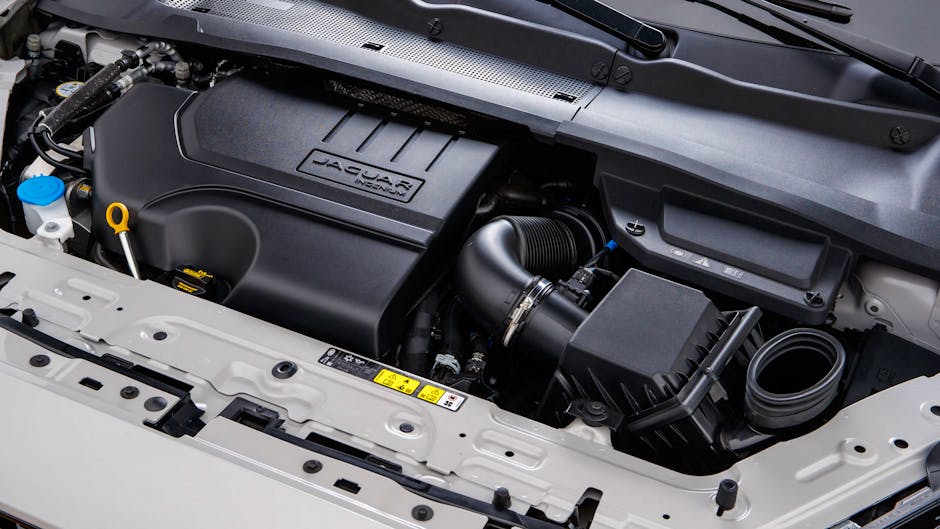
Worsening the case is the fact the 2.0-litre sounds a bit like a diesel at low to mid-revs. This means pushing the engine hard and using the more aggressive Dynamic driving mode for a somewhat pleasing sound, but then fuel economy suffers greatly.
On the plus side, the E-Pace offers decent levels of grip, a quiet cabin and smooth gear changes as well as a reasonably compliant ride despite being firmer than most of its rivals (and riding on up to 21-inch alloys). Compared to the F-Pace, though, it feels more ungainly and less agile.
As with most SUVs, a diesel makes more sense (for the time being, at least) than a petrol because of the improved efficiency and low-down pulling power. Only the D240 was available on the launch and its 236bhp output is plenty, not to mention delivered in palatable fashion. It is also only a second or so slower from 0-62mph than the P300.
Heading off the beaten track in Corsica, we found the E-Pace AWD was capable of cruising up worryingly steep and rocky gravel dirt roads. The sort that would be impossible for an estate. The average SUV owner will never need to tackle more than a speed bump, of course, but it is nice to know you could.
Jaguar E-Pace: What about practicality and safety?
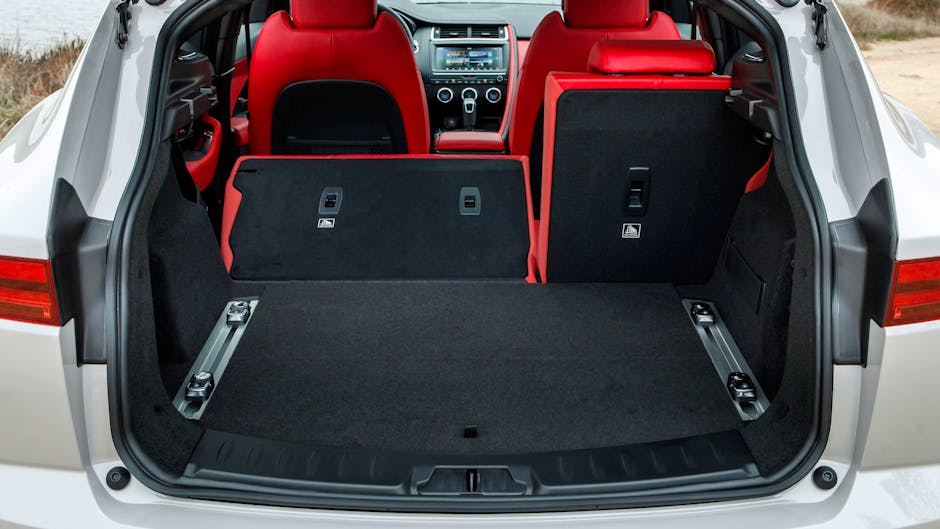
Being a large, well-designed vehicle reflects positively in the practicality department. Overall luggage area is 1,234 litres with the rear seats folded down, which is less than a BMW X1 (1,550 litres) and the Audi Q3 (1,325 litres), but it has both beaten with them up, at 577 litres versus 507 and 427 litres, respectively. A Volvo XC60 manages 505 litres.
Usefully, you can wave your foot under the rear bumper to open the boot when your hands are full. As for towing, expect up to 1,800kg on all models, except the P150 and its 1,600kg maximum. That’s a lot less than some of its rivals.
Other pluses include front door bins so large things can actually disappear (they are made to accommodate a large water bottle), big glove box and another large storage area between the front seats.
Head room and leg room was good for this writer’s six-foot frame, even with the panoramic roof that eats into the former. It was designed for five adults and only those of exceptional height or width will find being in the back unpleasant.
Safety is a strong suit of the E-Pace, much like the F-Pace. It was awarded a five-star Euro NCAP rating so you and your passengers have a decent chance in the event of a crash, with various safety systems designed to prevent a collision in the first place including autonomous braking and lane-keep assist.
Jaguar E-Pace: Running costs, CO2 and fuel efficiency?
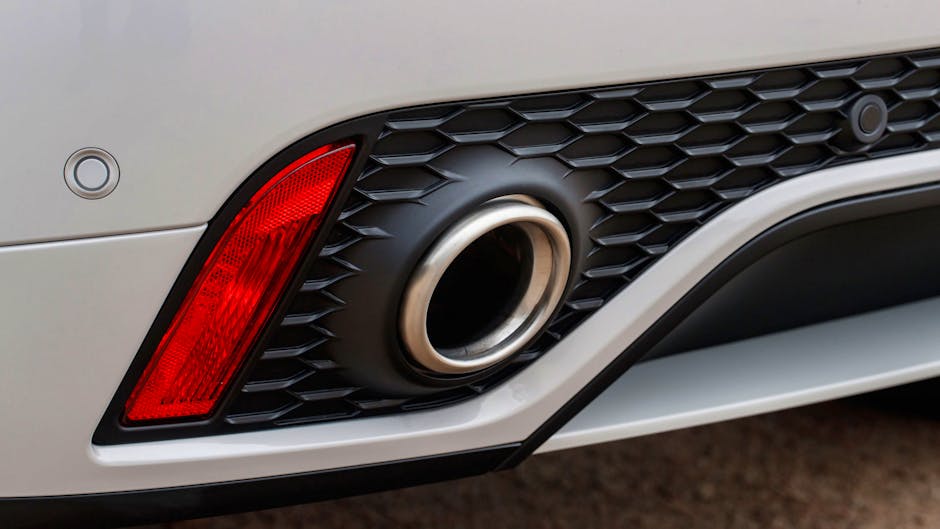
The weight of the Jaguar E-Pace makes it less efficient than it should be. The most fuel-efficient D150 engine in front-wheel drive offers 60.1mpg combined. The more powerful D180 keeps fuel economy in the fifties, while the D240 can muster up a claimed 45.6mpg combined at best.
In petrol land, the P300 is the thirstiest, at 35.3mpg (combined), which means running it on a day-to-day basis will get pricey. It is, however, only slightly thirstier than the P240, which manages 36.7mpg, so the performance gains come at a modest cost.
Emissions are reasonable for the E-Pace, but nothing outstanding. The D150 comes in at 124g/km on 17-inch alloys, rising to 129g/km for the 18-inch to 20-inch alternatives. The P300 chucks out 181g/km.
Jaguar E-Pace: Should I buy one, then?
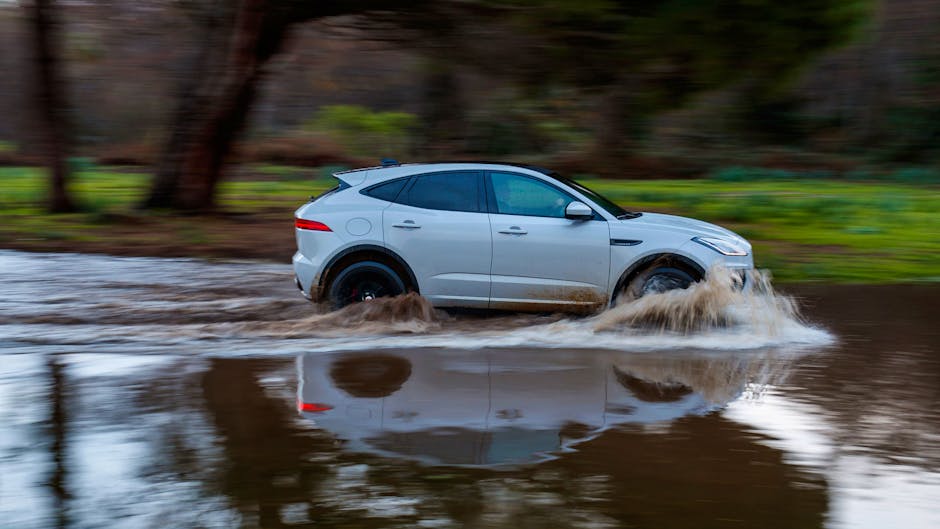
The F-Pace never excited us as much as other Jaguars and the E-Pace has the same problem, but then perhaps we expect too much from a type of vehicle designed to carry families.
In its defence, Jaguar has made it more involving than most of its SUV competitors without really compromising on comfort, practicality and ride quality.
Less forgivable, however, are some quality issues – particularly when it comes to the interior and inconsistent panel gaps on the exterior. And that the P300 petrol fails miserably to live up to its wince-inducing £50,000 price tag.
Yet in terms of ownership appeal, the E-Pace and its trendy Jaguar badge has little to worry about, standing out alongside its Germanic rivals with ease. Inevitably it will sell incredibly well.
Stick to the cheaper trim levels and lower-output diesels and the Jaguar E-Pace makes a strong case for your money. Beyond that, though, and its competitors start to look considerably more tempting.
Specification
| Engine | 2.0-litre four-cylinder |
|---|---|
| Power | 296bhp at 5,500rpm |
| Torque | 295lb/ft (400Nm) at 1,500-4,500rpm |
| Acceleration | 0-62mph in 6.4 seconds |
| Top speed | 151mph |
| Emissions | 181g/km |
| Fuel economy | 35.3mpg (combined) |
| Price | From £28,500 |
Leave a Reply